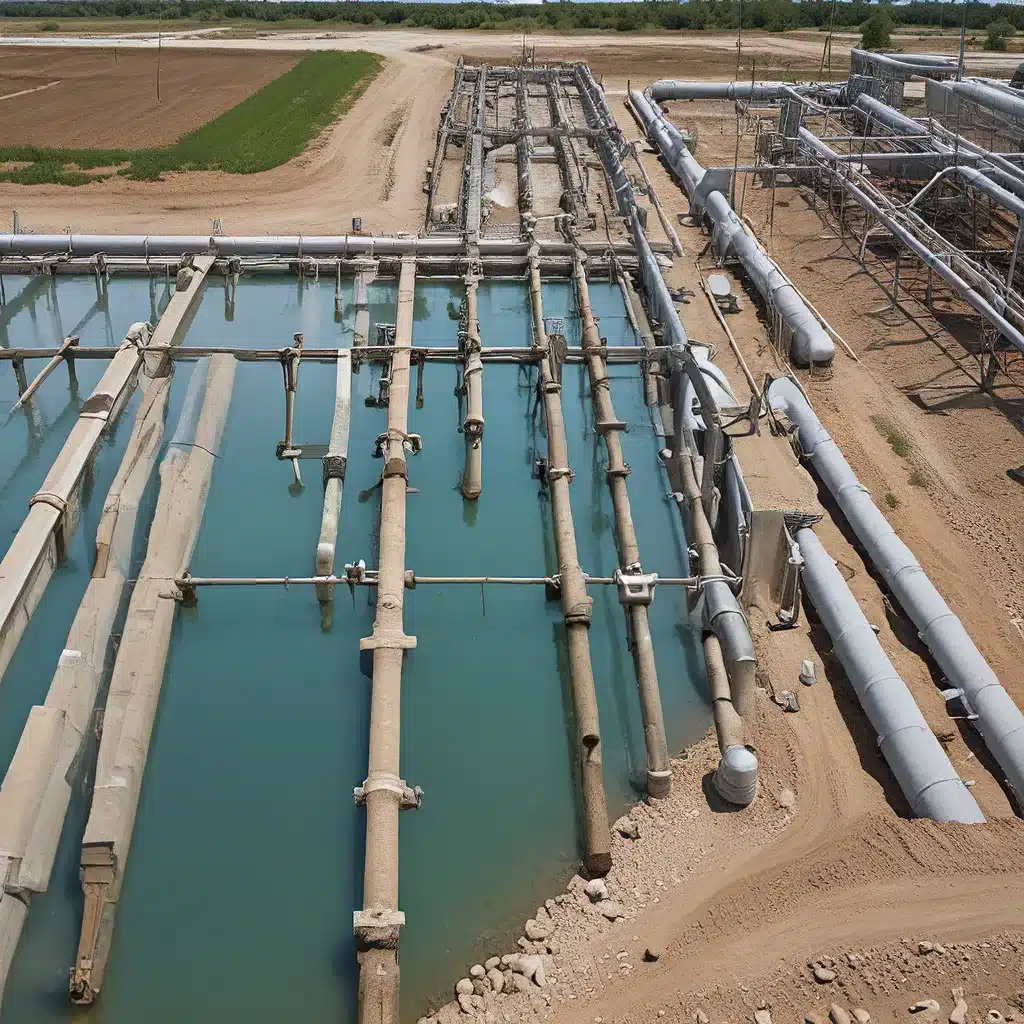
Navigating the Uncharted Waters of PFAS
It’s been a wild ride, folks. As the water treatment industry navigates the ever-changing landscape of regulations, one thing has become crystal clear: per- and polyfluoroalkyl substances (PFAS) are the proverbial elephant in the room. These “forever chemicals” have been lurking in our water supplies, unseen but undeniably present.
According to WaterWorld, the drinking water treatment industry has stepped up as a beacon of hope, uniquely positioned to tackle the PFAS problem head-on. With cost-effective and efficient solutions like third-party certified point-of-use (POU) and point-of-entry (POE) systems, we’re empowered to talk about PFAS solutions in a clear, concise, and calm manner.
Regulatory Tides: Ebbing and Flowing
As the regulatory landscape continues to evolve, the Environmental Protection Agency (EPA) has been making strides in addressing the PFAS challenge. In March, the agency proposed National Primary Drinking Water Regulations (NPDWR) for six PFAS substances, including enforceable Maximum Contaminant Levels (MCLs) for PFOA and PFOS at 4 parts per trillion (ppt) each. The proposed regulation also includes a Hazard Index (HI) approach for four additional PFAS, including PFNA, PFHxS, PFBS, and HFPO-DA (GenX Chemicals) at a value of 1.
Now, while the EPA is working hard to regulate PFAS in drinking water, more than 10 states have already established or proposed their own enforceable MCLs or Action Levels. This variation in regulations can be a bit of a headache, but the EPA’s actions are expected to provide some much-needed uniformity and harmonize the rules for PFAS in drinking water across the country.
Diving into the Data: UCMR5 Sheds Light
As if navigating the regulatory waters wasn’t challenging enough, the EPA has also released the first data set from the Fifth Unregulated Contaminant Monitoring Rule (UCMR5). This data provides a snapshot of the nation’s drinking water, revealing that 431 Public Water Systems (PWSs) show detectable levels of PFAS. Out of those, 219 PWSs are reporting levels exceeding the EPA’s proposed regulations.
Now, while this may seem like a relatively small sample size, the report suggests that upwards of 50% of PWSs may be at risk of being out of compliance. This means that testing, treating, and taking action are crucial measures to mitigate PFAS exposure.
Crafting Effective Solutions: The Power of Certified Systems
When it comes to addressing PFAS contamination, third-party certified POU and POE drinking water treatment systems are proving to be game-changers. Reverse Osmosis (RO) systems, as well as other filtration systems like carbon blocks, Granular Activated Carbon (GAC) matrixes, and Anion Exchange (AIX) systems, can effectively remove these pesky forever chemicals. But the key is to look for systems that are certified to NSF/ANSI 53 or NSF/ANSI 58 standards, ensuring they’ve been tested and verified to reduce PFAS.
Handling the Waste: A Delicate Dance
Now, as we address the PFAS problem in our water supplies, we can’t ignore the elephant in the room: what do we do with the waste that’s been removed? Regulatory actions through the Comprehensive Environmental Response, Compensation, and Liability Act (CERCLA) and the Toxic Substances Control Act (TSCA) have dramatically impacted the handling and disposal of PFAS-containing materials.
The EPA has proposed a hazardous substance designation for PFOA and PFOS, and aims to expand the designation to additional PFAS under CERCLA. Additionally, the final ruling on TSCA, effective in November 2023, will require all manufacturers and importers of PFAS or PFAS-containing articles since 2011 to report chemical, environmental, and health effects to the EPA.
Navigating these regulations can be a complex task, but it’s crucial to understand that these designations may not directly apply to residential and, in some cases, commercial drinking water treatment. In residential applications, POU and POE residuals and waste streams are considered household waste and are exempt from hazardous waste disposal requirements. However, in commercial settings, requirements can vary and are largely dependent on the quantity of waste generated.
Staying Ahead of the Curve: Resources and Collaboration
To help water treatment professionals stay ahead of the regulatory curve on PFAS, the Water Quality Association (WQA) has developed a PFAS Portal – a one-stop shop for everything related to these forever chemicals. This portal includes a downloadable Dealer Guide, packed with the latest scientific and regulatory information, as well as practical talking points on treatment options and disposal strategies.
But it’s not just about staying informed; it’s also about having a voice in the decision-making process. As the regulatory landscape continues to gain momentum and scrutiny intensifies surrounding drinking water, it’s vital that the water treatment industry has a seat at the table. Collaboration with policymakers is essential in bringing drinking water solutions and tools to confront PFAS head-on.
Embracing the Ebb and Flow: A Future-Proof Mindset
The truth is, the water treatment industry is navigating uncharted waters when it comes to PFAS regulations. But with a future-proof mindset and a willingness to adapt, we can ride the waves of change and come out stronger on the other side.
By staying informed, leveraging the right tools and resources, and collaborating with policymakers, we can ensure that our water treatment solutions are not only effective in addressing PFAS contamination but also aligned with the evolving regulatory landscape.
So, let’s dive in, folks. The future of water treatment is ours to shape, and with a little bit of creativity, a dash of resilience, and a whole lot of determination, I’m confident that we’ll be able to ride the tide of change and emerge as leaders in this ever-evolving industry.
After all, Inland Waters has always been at the forefront of water treatment innovation, and we’re not about to let a few pesky forever chemicals slow us down. Onward and upward, my friends!


